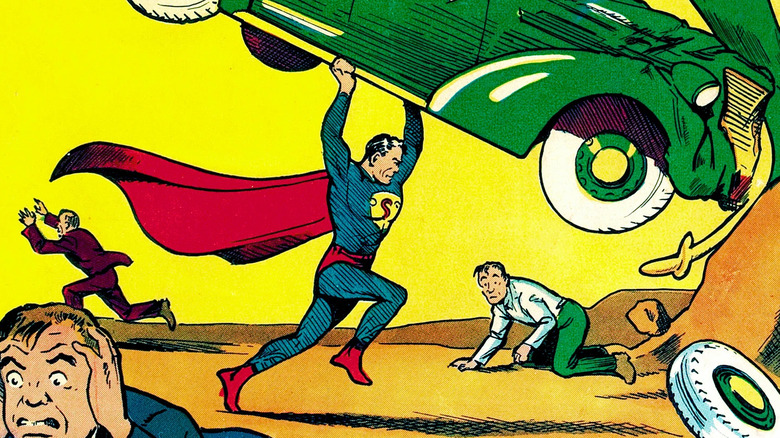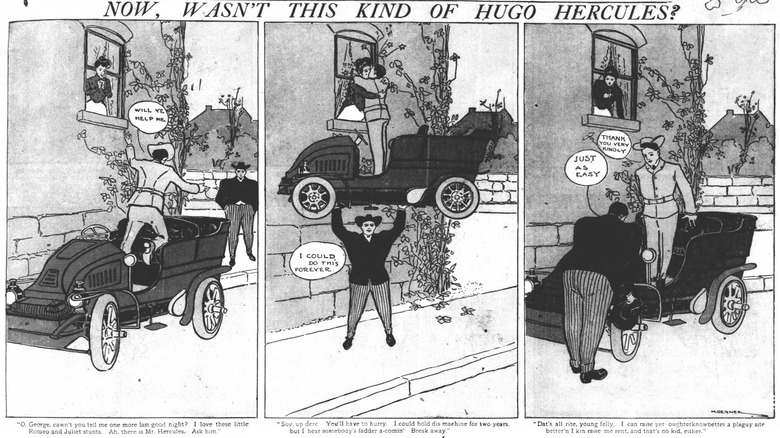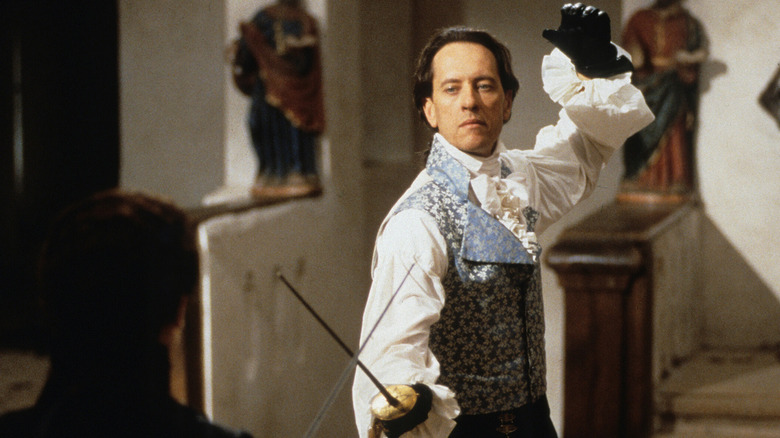
At a time when superheroes are dominating screens big and small, it's a wonder more attention hasn't been given to their humble origins. For over 100 years, superhuman heroes of all kinds have been gracing the pages of comics, and while some of the earliest comic book superheroes may have been forgotten, many are still going strong. Recently, James Gunn's "Superman" has landed in movie theaters and proved a huge hit with fans all around the world. The Man of Steel is just as popular today as he was
when he debuted in Action Comics in 1938.
Superman may have been the first comic book superhero to emerge who fit all the criteria and expectations fans have for superheroes today — superpowers, a colorful costume, a secret identity, and a commitment to saving people and fighting for justice through non-lethal means. It's also probably fair to say Superman is the earliest superhero to appear in a comic book whose appeal still endures to this day, while many of his early contemporaries have faded into obscurity. However, Superman was not the first superhero to appear in comics.
The earliest comic character who could be considered a superhero made his debut in 1902, in comic strips published in the Chicago Tribune over just five months. Hugo Hercules, created by Wilhelm Heinrich Detlev Körner, was a superhumanly strong character often seen using his strength to help others. Though short-lived and only appearing in a newspaper comic strip, Hugo is technically comics' first superhero.
Read more: Every Live-Action Superman Costume Ranked (Including David Corenswet)
Hugo Hercules Introduced Superheroes To The World Of Comics

Unlike most superheroes modern comic readers are used to, Hugo Hercules did not have an origin story. He was introduced in the September 7 edition of the Chicago Tribune in 1902, in a strip that saw him chasing down and stopping a trolley car with his bare hands so that a distressed lady could hop aboard. Other strips saw him catching a falling safe in one hand, picking up an artillery cannon to fend off a gang holding him at gunpoint, and pulling a derailed train down the tracks.
Hugo was a lighthearted comic strip character, a far cry from what modern audiences would consider a typical superhero, but he did undoubtedly make use of superhuman abilities to perform heroic deeds. His lack of an origin story feels like a reflection of the time in which he was written. Comic strips were a place for a quick joke or flight of fancy when Hugo Hercules was being published, meaning little consideration was given to character development or backstory.
Despite his short-lived time in print and lack of depth, Hugo Hercules started a trend for comics about characters with superhuman attributes, committed to feats of heroism. Pulp heroes such as the Shadow and the Phantom would follow, before fully fledged superheroes like Superman later started to appear as the leads in their own comic book series.
The First Superheroes To Appear Outside Of Comics

While Hugo Hercules was the first instance of a character who could be considered a superhero appearing in a comic, he wasn't necessarily the first superhero to appear in all of fiction. The roots of superhero stories can be traced back to so-called penny dreadfuls — cheap, lurid, serialized literature — from the 19th century in the UK.
In the late 1860s and the following decade, several penny dreadfuls were published inspired by urban legends of a figure known as Spring-Heeled Jack. Though initially considered a kind of Victorian bogeyman or violent prankster, several penny dreadfuls turned Spring-Heeled Jack into a prototype for later heroes like Batman. The Spring-Heeled Jack of these stories, like the Dark Knight, relied on gadgets to give him a superhuman advantage over his foes and a costume to conceal his true identity. In some iterations, he even had a secret headquarters, reminiscent of the Batcave. The authors transformed Jack from a folkloric villain into a champion of justice, fighting corrupt, wealthy villains.
Elsewhere, the Scarlet Pimpernel made his debut in 1903 — a year after Hugo Hercules' comic strips. Appearing in a play by Baroness Orczy, the Pimpernel was a masked avenger who saved aristocrats from the guillotine during the Reign of Terror in France. While the Scarlet Pimpernel is often called one of the first superheroes, whether modern audiences would consider it heroic to defend the super-rich from the will of the people is not so clear.
If you're looking for the easiest way to keep up with all the major movie and TV news, why not sign up to our free newsletter?
Read the original article on SlashFilm.












